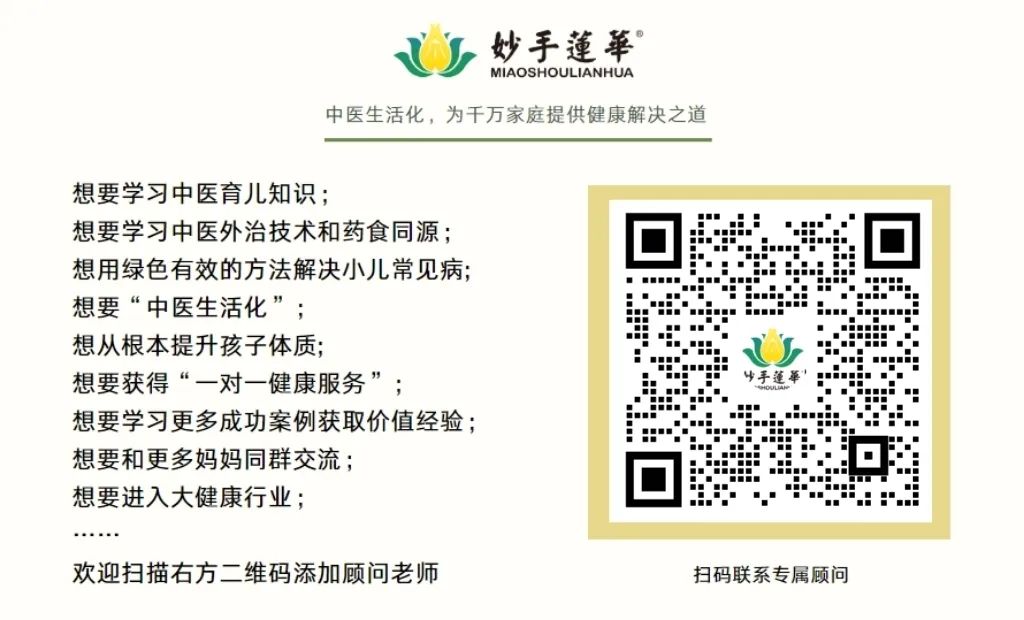The tongue, though small, has a close relationship with the organs, meridians, qi, blood, and body fluids, and can objectively and sensitively reflect their physiological functions and pathological changes. As stated in the “Shang Han Zhi Zhang: Observing the Tongue for Diagnosis”: “The diseases of the meridians, organs, nutrients, defenses, qi and blood, exterior and interior, yin and yang, cold and heat, deficiency and excess are all manifested on the tongue.”
Vol. 1
Distribution of the Five Zang Organs on the Tongue
The changes in the organs are reflected on the tongue surface according to certain distribution patterns: the tip of the tongue often reflects the conditions of the upper jiao (heart and lungs); the center of the tongue reflects the conditions of the middle jiao (spleen and stomach); the root of the tongue reflects the conditions of the lower jiao (kidneys); and the sides of the tongue reflect the conditions of the liver and gallbladder.
What does a normal tongue look like?
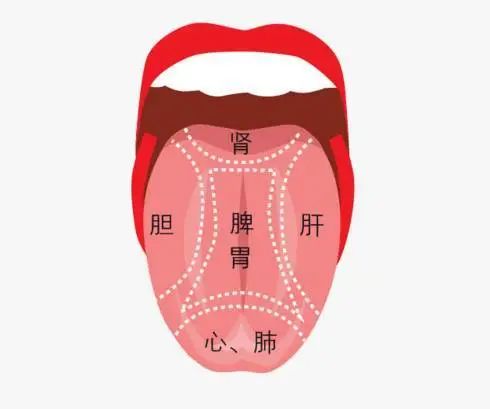
A normal tongue is pale red with a thin white coating. Specifically, the tongue body is moist and rosy, of moderate size, and soft and flexible; the coating is thin, white, and even, with a moderate texture of dryness and wetness, not sticky or greasy, and has a root. This indicates a strong stomach qi, abundant qi and blood, and normal organ function.
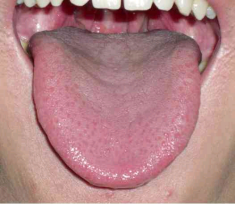
Vol. 2
How to Observe the Tongue
What aspects should we focus on when observing the tongue?
The tongue body and tongue coating.
The tongue body, which is the muscular and vascular structure of the tongue, is nourished by the qi and blood of the organs. Observing the tongue body includes examining its spirit, color, shape, and condition to assess the deficiency or excess of the organs and the abundance or decline of qi and blood.
The tongue coating refers to the layer of coating on the tongue surface, which is produced by the upward steaming of stomach qi. Observing the tongue coating includes examining the quality and color of the coating to assess the depth of the disease, the nature of the pathogenic factors, and the changes of the evil and the righteous.
A comprehensive observation of the tongue body and coating, along with a thorough analysis, is necessary for accurate diagnosis.
Vol. 3
There are many issues related to the tongue body and coating. Today, I will present a typical case that covers a variety of tongue manifestations. By understanding this tongue manifestation, you can extrapolate and identify many health issues from your own and others’ tongues.
Let’s take a look together!
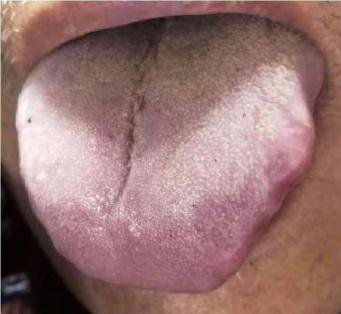
From the image, we can see that the tongue manifestation is: the tongue body is dull, swollen with teeth marks, and the coating is white and greasy, with a prominent crack in the middle.
According to the patient: In the past week, due to improper diet, they have experienced fullness in the stomach area, which worsens after eating, lack of appetite, fatigue, no nausea or vomiting, no acid reflux or belching, normal sleep, and normal bowel movements.
Dark tongue body: This may indicate insufficient qi and blood, which cannot nourish the tongue.
Prominent crack in the middle: This indicates dryness in that area, but it may not necessarily be due to yin deficiency; spleen deficiency can lead to insufficient qi and blood, and thus the essence cannot ascend to nourish the tongue, resulting in a cracked tongue.
Swollen tongue: This indicates excess dampness, which causes the tongue to swell.
White and greasy coating: This also indicates excess dampness.
Fullness in the stomach area, worsening after eating: This indicates that spleen deficiency affects the stomach; the spleen qi does not rise, and the stomach qi does not descend, leading to stagnation in the middle jiao, causing discomfort and fullness in the stomach area. Additionally, if the spleen is not functioning, the water consumed cannot be properly transformed into body fluids, but instead becomes dampness that obstructs, increasing the feeling of fullness.
Fatigue: Spleen deficiency cannot produce enough qi and blood, leading to a lack of energy, compounded by the obstruction of dampness, resulting in overall weakness.
Therefore, considering the above clues, the patient is diagnosed with spleen deficiency with dampness obstructing the middle jiao, leading to stomach distension. The treatment method is to strengthen the spleen, resolve dampness, and eliminate fullness.
Dietary therapy:
① Poria porridge (from “Ren Zhai Zhi Zhi Fang”)
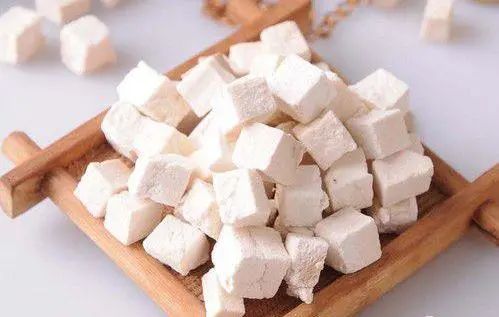
【Ingredients】15g Poria (Fu Ling), 50g Japonica rice.
【Method】Grind the Poria into a fine powder and cook it with the Japonica rice to make porridge. Consume while hot, 1-2 times daily.
② Coix seed porridge (from “Bencao Gangmu”)
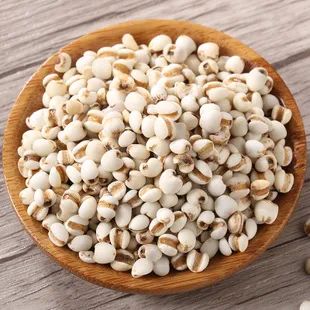
【Ingredients】60g Coix seeds (Yi Yi Ren), 60g Japonica rice, 5g salt, 2g monosodium glutamate, 3g sesame oil.
【Method】Wash and crush the Coix seeds, rinse the Japonica rice, and cook them together in a pot with an appropriate amount of water to make porridge. After the porridge is cooked, add salt, monosodium glutamate, and sesame oil. Consume warm, 2 times daily.
Acupuncture therapy:
Selected points: Shenque (Ren 8), Zhongwan (Ren 12), Zusanli (ST 36), Fenglong (ST 40)
Shenque point quick location: Center of the navel.
Zhongwan quick location: Zhongwan point is located in the upper abdomen, at the midpoint of the line connecting the navel (Shenque) and the xiphoid process.

Zusanli quick location: Sit with knees bent, draw a line between the patella and the outer ankle tip, and at the midpoint of this line, slightly anterior to the fibula, press the area that feels heavy to locate Fenglong point.
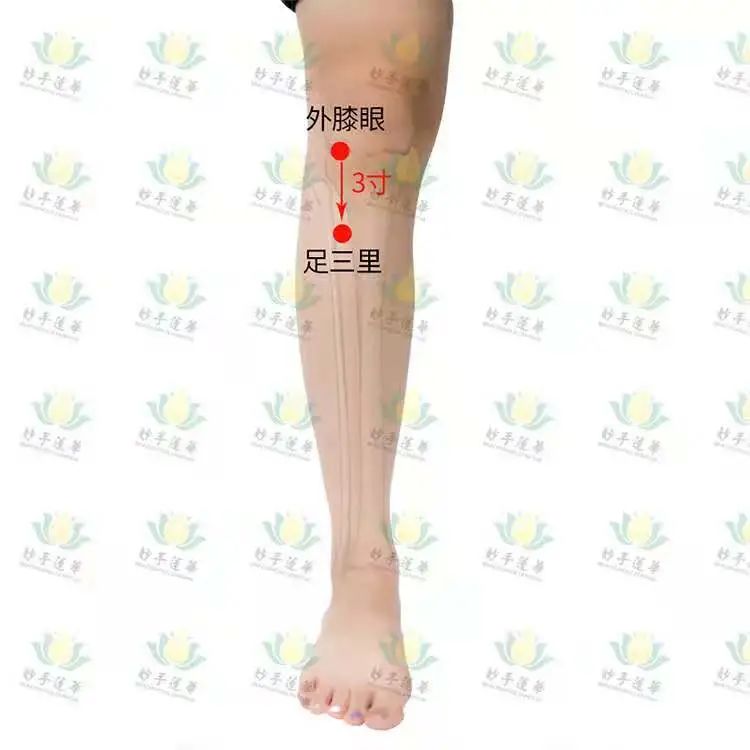
Fenglong quick location: Sit with knees bent, draw a line between the patella and the outer ankle tip, and at the midpoint of this line, slightly anterior to the fibula, press the area that feels heavy to locate Fenglong point.
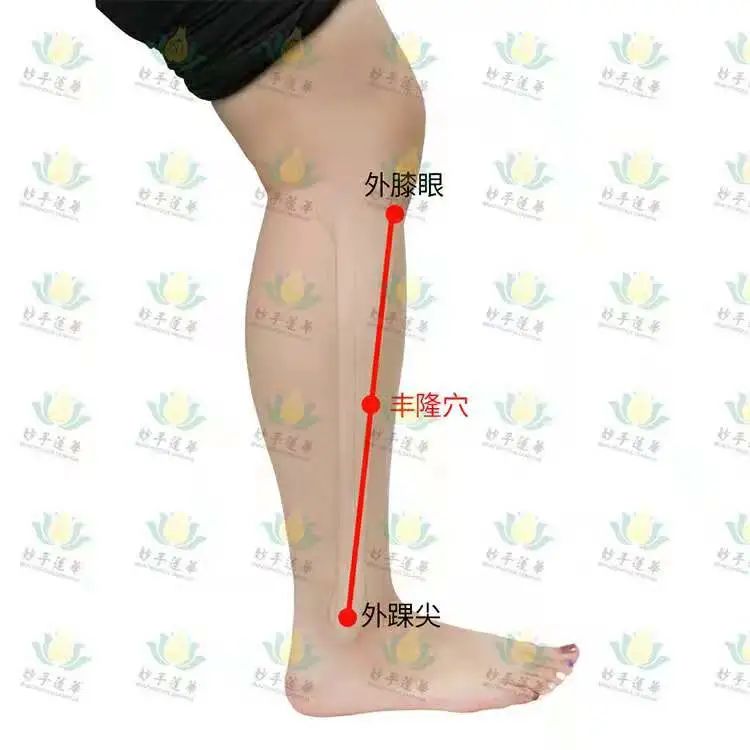
Procedure: Ignite one end of the moxa stick and hold it about 2-3 cm away from the acupoint, performing moxibustion until a warm sensation is felt without burning pain, generally for 10-15 minutes at each point until the skin shows a slight redness.
In summary, to maintain the health of the spleen and stomach, it is important to regulate diet and engage in appropriate exercise. Meals should be regular and moderate, easily digestible, and prevent overeating, excessive hunger, binge eating, and overconsumption of cold foods. Avoid alcohol, smoking, and spicy seasonings and beverages such as chili, curry, mustard, pepper, strong tea, and coffee. Cooking methods should favor stir-frying, braising, boiling, steaming, and stewing, while avoiding frying and deep-frying. Additionally, maintaining an optimistic mood and actively participating in physical exercise is essential for achieving good health.
If everyone wants to continue analyzing our tongue manifestations, please show your support with likes, and feel free to submit images of your tongue for personalized analysis and treatment methods.
